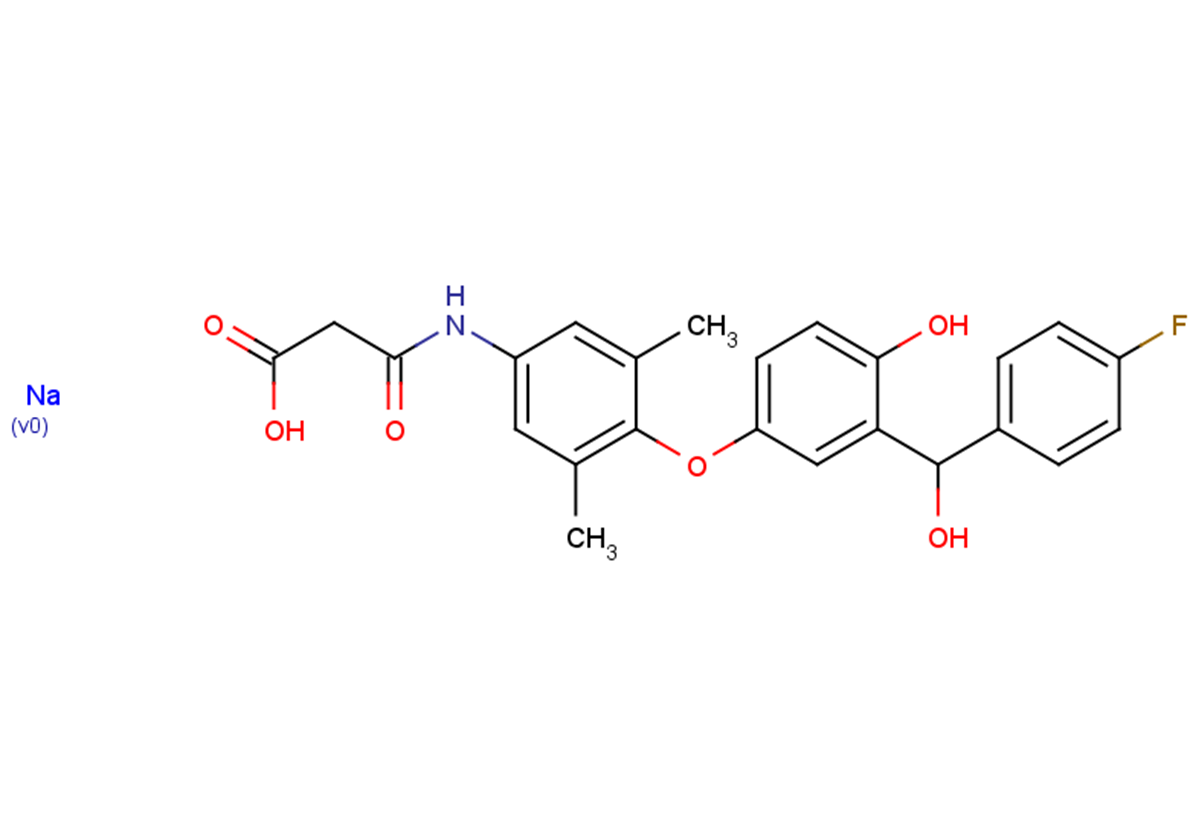Shopping Cart
- Remove All
 Your shopping cart is currently empty
Your shopping cart is currently empty

KAT681 is a liver selective thyromimetic.

| Pack Size | Price | Availability | Quantity |
|---|---|---|---|
| 25 mg | $1,520 | 6-8 weeks | |
| 50 mg | $1,980 | 6-8 weeks | |
| 100 mg | $2,500 | 6-8 weeks |
| Description | KAT681 is a liver selective thyromimetic. |
| In vitro | Prolonged treatment with KAT681 enhances the hepatic expression of both low-density lipoprotein (LDL) receptor and scavenger receptor class B, type I without affecting cholesteryl ester transfer protein activity. SR-BI protein expression is markedly downregulated by incubation with 50 μg/mL AcLDL. This effect can not be reversed by the addition of KAT681. Western blot showing human SR-BI (CLA-1) expression in normal HepG2 cells and in HepG2 cells loaded with AcLDL and subsequently incubated with vehicle or KAT681 [1]. |
| In vivo | KAT681 treatment causes a 60% decrease in plasma cholesterol and a 70% decrease in plasma triglycerides[1]. KAT681 obviously enhances hepatic LDLrs in SR-BI KO mice (2-fold of controls, P<0.01), along with a marked decrease in plasma cholesterol[2]. A marked decrease of plasma cholesterol is observed at 36 nmoles/kg/day KAT681 (T-0681), whereas doses higher than 36 nmoles/kg/day display no further lipid-lowering effect, in preliminary dose-titration studies. A marked increase of hepatic SR-BI expression at 36 nmol/kg/d KAT681 (T-0681) and a concomitant 50% decrease of plasma cholesterol are observed, in preliminary dose-titration studies in wild-type (WT) mice. New Zealand White (NZW) rabbits are fed a 0.2% cholesterol diet and dosed with 36 nmoles/kg/day KAT681 or respective placebo control for 4 weeks, in the subsequent study. Higher doses than 36 nmol/kg/d display no further lipid-lowering effect. |
| Alias | T0681 |
| Molecular Weight | 462.429 |
| Formula | C24H22FNNaO6 |
| Cas No. | 373641-87-3 |
| Relative Density. | 1.31g/cm3 |
| Storage | Powder: -20°C for 3 years | In solvent: -80°C for 1 year | Shipping with blue ice. |

Copyright © 2015-2025 TargetMol Chemicals Inc. All Rights Reserved.